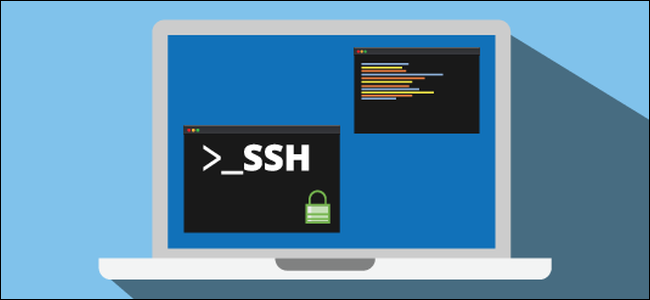
Secure your Linux system’s SSH connection to protect your system and data. System administrators and home users alike need to harden and secure internet-facing computers, but SSH can be complicated. Here are ten easy quick-wins to help protect your SSH server.
SSH Security Basics
SSH stands for Secure Shell. The name “SSH” is used interchangeably to mean either the SSH protocol itself or the software tools that allow system administrators and users to make secure connections to remote computers using that protocol.
The SSH protocol is an encrypted protocol designed to give a secure connection over an insecure network, such as the internet. SSH in Linux is built on a portable version of the OpenSSH project. It is implemented in a classic client-server model, with an SSH server accepting connections from SSH clients. The client is used to connect to the server and to display the session to the remote user. The server accepts the connection and executes the session.
In its default configuration, an SSH server will listen for incoming connections on Transmission Control Protocol (TCP) port 22. Because this is a standardized, well-known port, it is a target for threat actors and malicious bots.
Threat actors launch bots that scan a range of IP addresses looking for open ports. The ports are then probed to see if there are vulnerabilities that can be exploited. Thinking, “I’m safe, there are bigger and better targets than me for the bad guys to aim at,” is false reasoning. The bots aren’t selecting targets based on any merit; they’re methodically looking for systems they can breach.
You nominate yourself as a victim if you haven’t secured your system.
Security Friction
Security friction is the irritation—of whatever degree—that users and others will experience when you implement security measures. We’ve got long memories and can remember introducing new users to a computer system, and hearing them ask in a horrified voice whether they really had to enter a password every time they logged in to the mainframe. That—to them—was security friction.
(Incidentally, the invention of the password is credited to Fernando J. Corbató, another figure in the pantheon of computer scientists whose combined work contributed to the circumstances that led to the birth of Unix.)
Introducing security measures usually involves some form of friction for someone. Business owners have to pay for it. The computer users may have to change their familiar practices, or remember another set of authentication details, or add extra steps to connect successfully. The system administrators will have additional work to do to implement and maintain the new security measures.

Post a Comment Blogger Facebook
We welcome comments that add value to the discussion. We attempt to block comments that use offensive language or appear to be spam, and our editors frequently review the comments to ensure they are appropriate. As the comments are written and submitted by visitors of The Sheen Blog, they in no way represent the opinion of The Sheen Blog. Let's work together to keep the conversation civil.